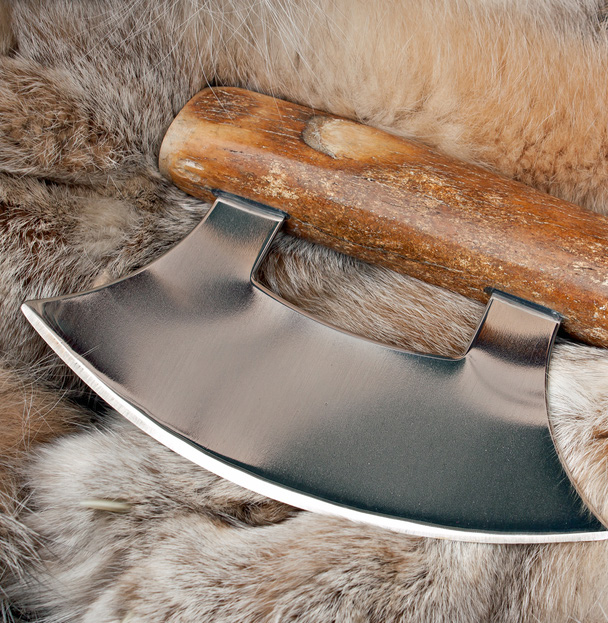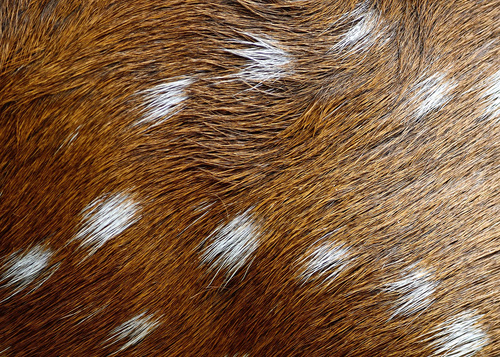Caring for Meat and Furs
Another important aspect of trapping is knowing how to properly care for meat and fur once you have harvested an animal successfully. All of your hard work could be for nothing if you don’t take the steps necessary to ensure the meat is handled correctly and in a timely manner.
To avoid spoilage, the process of field dressing, skinning, and butchering should be completed as soon after the animal has perished as possible. Although the process is essentially the same when dealing with large game compared to small game, there are some differences that are explained below.
LARGE GAME
The meat of deer and other large game is susceptible to rapid spoilage so every effort should be taken to cool the carcass as soon as possible.
Start by rolling the animal onto its back and creating an incision from right below the chest cavity to the hind area. Be careful not to cut too deep as this may rupture internal organs. Best case scenario, this just creates a bigger mess but if certain parts (such as the bladder) are cut open, the meat could be ruined.
Use a stick to prop open the chest cavity once the internal organs have been removed. This promotes air circulation through the body cavity and helps remove trapped heat. The faster the carcass is cooled, the better the meat will taste when it comes time to cook.
Assuming the animal will be dragged back to camp, leave the hide on for now so the meat doesn’t become dirty on the trip home. Once back at camp, hang the carcass upside down from a tree branch.
This makes the removal of the hide much easier. Be careful when removing the hide. Fur can be extremely difficult to remove from the meat and some animals have powerful scent glands that can ruin the flavor.
Deer, for instance, have scent glands in the joint of their hind legs. If these glands are punctured during the skinning process, any meat in close proximity to the area will be wasted.
SMALL GAME
The smaller size of these animals makes it much easier to handle the carcass. Smaller creatures do not hold heat as well after death so spoilage isn’t as much of a concern. In fact, most small game trappers simply collect the animals and bring them back to camp before dressing and skinning the carcasses.
Unlike large game, it is usually easier to skin small game animals before gutting and butchering. The easiest way to skin most small game is to gently cut the hide around the circumference of the midsection. The hide can then be peeled back from both sides.
Think of this technique as removing the “shirt” and “pants” from the animal. When transporting meat back to camp, one concern is insects. Insects are attracted to animal carcasses and certain species of insects can pose a threat to the safety of the catch.
For this reason, always use game bags to transport meat. These bags are inexpensive and readily available at sporting goods stores. A single bag meant for a deer quarter should be sufficient for just about anything you might trap and will protect the meat from insects and dirt on the trip home. These bags allow air to circulate while preventing insects from getting in making them an excellent addition to your survival gear. Cotton pillow cases also work well as makeshift game bags when nothing else is available.
Preserving meat that is not going to be immediately consumed is another consideration for the survival trapper. If you are located in a cold climate where temperatures remain below freezing most of the time, you don’t really need to worry about preserving meat as it will stay frozen if left outside.
Just make sure to protect it from scavenging animals such as bears and coyotes. If the weather is warmer, however, steps must be taken to preserve the meat so as not to waste this valuable source of nourishment. There are many effective ways to preserve meat in the wild, but smoking, salting, and drying are the three best options for the survivalist. Drying meat effectively requires that it be cut into thin strips and hung in a sunny location with adequate air flow.

How long the meat takes to dry thoroughly will depend on the ambient temperature, the intensity of the sun, and the amount of air flow present. Meat has been properly dried when it is dry and crispy to the touch. When drying meat in this manner, make sure to protect meat from insects during the drying process. Also, you should be on the lookout for scavenging animals that may catch the scent of your drying meat stores and come to your camp looking for an easy meal. Smoking is more effective than drying although setting up a smoker takes more time and effort than standard drying.
The advantage is that even in hot, humid conditions, properly smoked meat can last for as long as a month. Meat can be smoked by placing it on a wooden framework over a small fire. Cloth or an old animal hide should be draped over the wooden framework to trap the heat and smoke from the fire. One to two days of smoking is usually sufficient for most meat and smokers automatically keep insects away. When smoking meat, the key to success is low temperatures and lots of smoke. If the fire is too large or burning too hot, the meat will be cooked instead of drying and the resulting product will not keep for long at all.
Try to use wet wood to create a cool fire that produces lots of smoke for best results. Salting meat involves completely submerging strips of meat in a saltwater solution.
How long this process takes depends on the ambient air temperature, how much salt is in the solution, and the fat content of the meat itself. Once all of the water has evaporated, a layer of brine will be left covering the meat. This protects the meat from spoilage until the meat is ready to be cooked (at which time the brine should be rinsed off).
SALVAGING THE FUR
In a survival situation, you should never discard anything that you might be able to use. Animal hides have many uses including clothing and shelter. Although it may not always be practical to salvage an animal hide, think about what it could be used for before deciding whether or not to preserve it for later use.
Keep in mind that even if you can’t use a particular hide, it could become a useful bartering tool in the future. Properly preserving an animal hide is a two-part process.
The first step is to dry the hide. Small game hides can be dried simply by hanging them in an area with sufficient air flow. Large game hides, on the other hand, require salt to properly dry. Spread salt over the entire flesh side of the hide and rub it in. After salting, these hides should be hung up to dry for about two weeks to ensure all moisture has been removed.
The drying time could be much shorter depending on the ambient temperature and the intensity of the sun in the area. Once drying is complete, it is referred to as rawhide. You should notice that the hide is extremely brittle at this stage. The second part of the preservation process is known as tanning and this is what softens the hide and turns it into pliable leather.
The most common way to tan a hide is to use assorted chemicals, but these chemicals won’t be available in a survival situation. A common way to tan hides in the wild is known as brain tanning. Chemicals found in the brains of large game can be used to create a tanning solution.

Usually, this is accomplished by creating a solution of one pound brain matter and two gallons of warm water. The hide should be soaked in this solution overnight. After soaking is complete, stretch the hide over a wooden frame and use a smooth tool to work the hide into a soft leather.
If the hide isn’t soft enough, you can make another tanning solution and soak the hide overnight again for an even softer final product. Once the leather has been properly tanned, it can be used to make clothing, as part of a shelter, or be used in a variety of equipment that you may need. If nothing else, the tanned hides can be stored for use as a bartering tool with other survivalists in the future.

